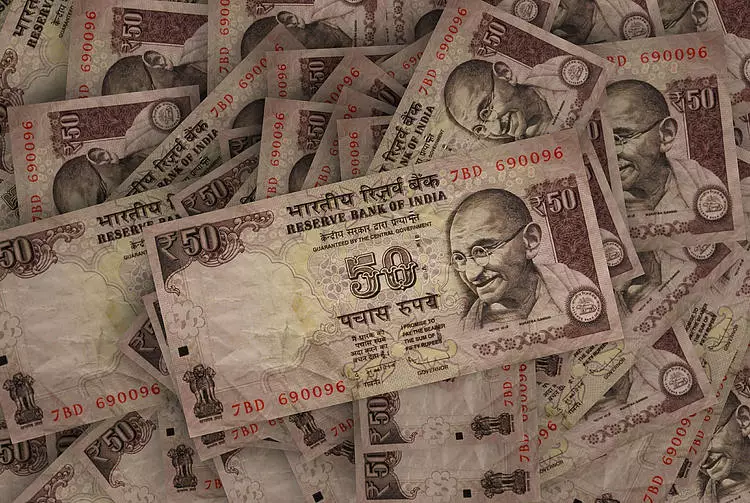The Indian Rupee (INR) has recently exhibited weakness, trading in a downtrend for the third consecutive session. This depreciation is primarily attributed to robust demand for the US Dollar (USD), fluctuations in crude oil prices, and a concerning trend of foreign capital outflows. The interplay of these factors is significant as they reflect the macroeconomic conditions impacting India’s currency. In a global context, the health of the INR can serve as a barometer for the Indian economy, reflecting both domestic and international economic realities.
The ongoing demand for the USD stems from foreign financial entities, which have intensified their buying, further pressuring the INR. This demand is often exacerbated during periods of geopolitical instability, as seen in the Middle East, where rising tensions have led to unpredictable oil price movements. Given India’s heavy reliance on crude oil imports, any spikes in oil prices can create a ripple effect, affecting trade balances and foreign exchange reserves. These imports are essential for maintaining domestic energy demands, and as oil prices fluctuate, so too does the value of the INR.
As investors navigate this challenging backdrop, the focus shifts toward crucial economic indicators, including the HSBC India Manufacturing Purchasing Managers Index (PMI) and the US ISM Manufacturing PMI. Set to be released on Tuesday, these reports will provide insights into manufacturing activity within India and the broader U.S. economy, respectively. The outcomes of these indicators are often regarded as precursors to economic performance, influencing both market sentiments and trading behaviors.
Experts suggest that the results could serve to either reinforce or mitigate current trends affecting the INR. Positive data from the manufacturing sector may bolster confidence in the local economy, potentially stabilizing the currency. Conversely, weaker-than-expected results could further fuel bearish sentiment towards the INR.
Investors also have their eyes on the U.S. Federal Reserve’s monetary policy projections, especially remarks from figures like Fed Chair Jerome Powell, who indicated a cautious approach to future interest rate adjustments. While maintaining a healthy job market and economic growth remains paramount, the possibility of further rate cuts is under consideration. Market speculation currently suggests a significant probability of a half-point rate cut in the upcoming months, with nearly 35.4% likelihood according to the CME FedWatch Tool.
The potential easing of U.S. monetary policy could have a multifaceted effect on the INR. On one hand, lower interest rates could diminish the appeal of the USD, making the INR comparably more attractive to foreign investors. Conversely, ongoing uncertainties related to inflation rates and global market dynamics could lead to continued volatility in currency markets.
The technical landscape for the USD/INR currency pair demonstrates an ongoing bullish trend, with the exchange rate holding above the critical 100-day Exponential Moving Average (EMA). As traders analyze price movements, the 84.00 psychological level serves as a notable resistance point. Investors are keenly watching for a decisive breakout above this level, which could lead to further upward movement towards 84.15—the peak observed earlier in August.
Conversely, a failure to maintain momentum or a drop below the 100-day EMA at 83.62 could trigger additional selling pressure, potentially bringing the exchange rate down to 83.00, another key support inflation point.
The Indian currency is notably sensitive to external influences. Key factors include the price of crude oil—a commodity India heavily imports—shifts in the U.S. dollar value, and the flow of foreign investment into the country. The Reserve Bank of India (RBI) plays a pivotal role, actively intervening in the forex market aimed at stabilizing the currency and supporting trade. Furthermore, the RBI adjusts interest rates to manage inflation, typically maintaining a target of 4%.
Higher interest rates typically strengthen currency value, as they attract investment from foreign entities seeking higher returns. Factors such as economic growth, balance of trade, and international inflation trends also significantly impact the INR. A positive growth rate characteristically leads to increased foreign investments, fostering demand for the currency.
The outlook for the Indian Rupee remains tethered to both domestic economic health and global market variables. As geopolitical tensions fluctuate and interest rate expectations evolve, stakeholders must closely monitor these dynamics. The juxtaposition of bullish U.S. dollar demands, volatile oil prices, and forthcoming economic reports will shape the trajectory of the INR in the coming weeks. Investors should ensure they remain vigilant, considering all these elements as they navigate the intricate forex landscape.


Leave a Reply